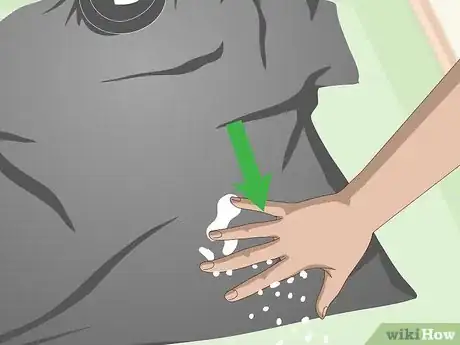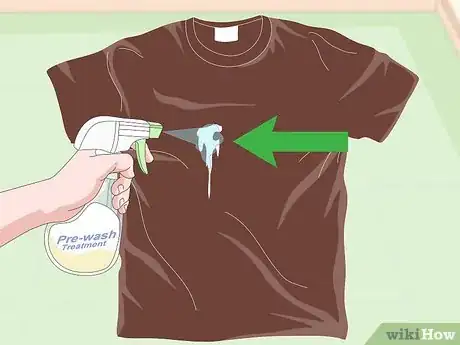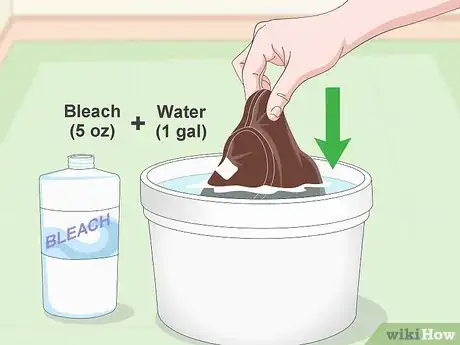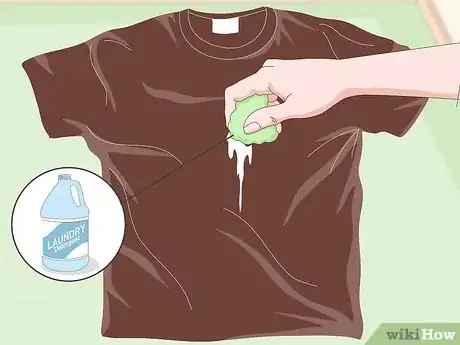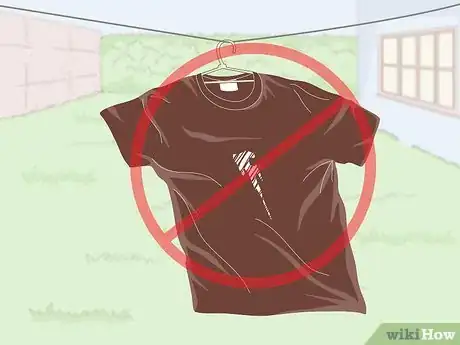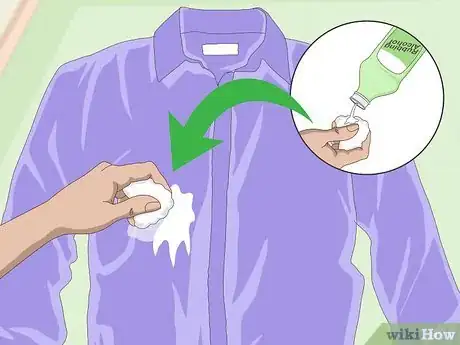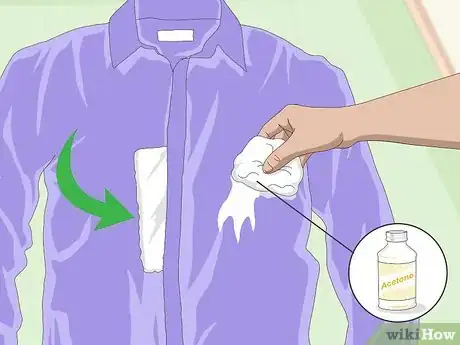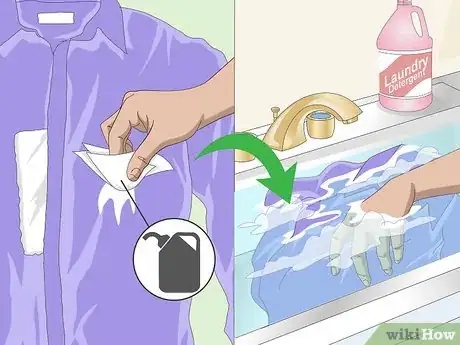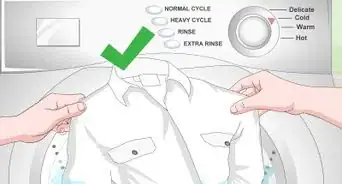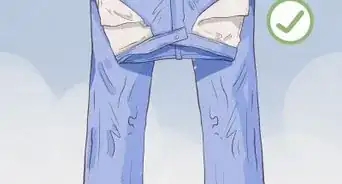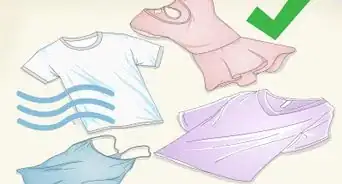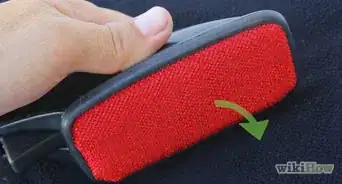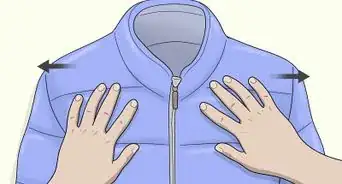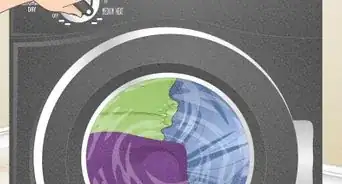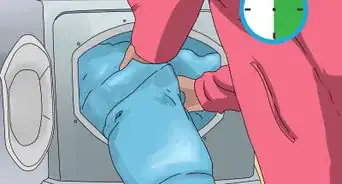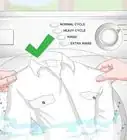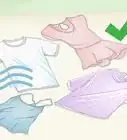This article was co-authored by wikiHow Staff. Our trained team of editors and researchers validate articles for accuracy and comprehensiveness. wikiHow's Content Management Team carefully monitors the work from our editorial staff to ensure that each article is backed by trusted research and meets our high quality standards.
This article has been viewed 51,506 times.
Learn more...
Correction fluid is wonderful for fixing mistakes on paper, but it can make a mess on your clothes. Clean correction fluid from clothing by removing any excess wet or dry fluid, applying a pre-wash laundry cleaner, and washing it with a load of laundry. You can also pre-treat the stain with a variety of household items. Send very delicate fabrics to the dry cleaner instead of trying to remove the stains at home.
Steps
Removing Excess Correction Fluid
-
1Get rid of excess fluid as soon as possible. Make your task easier by removing any fluid from your clothes immediately. Brush off any large, dried flakes with your hands. Do this even if you plan to send the clothes to the dry cleaners instead of tackling the stains at home.
-
2Wipe off the fluid if it’s still wet. Gently blot at the fluid with a rag or paper towel. Don’t press the rag or paper towel into the fluid. Be careful not to rub it into your clothes.Advertisement
-
3Pick off dried fluid. Make sure the fluid is completely dry. Scratch off as much as you can with your fingernail. Try brushing it off with a stiff-bristled brush. Only use a brush on thicker fabrics.
Using a Pre-Wash Treatment
-
1Spray the stain with a pre-wash treatment. Use very generous amounts of the spray to saturate the stain. Let it sit on the stain for at least a minute. Launder the item once the pre-wash treatment has had time to set.[1]
-
2Soak your garment in oxygen bleach. Combine 5 ounces (147.86 mL) of oxygen bleach with 1 gallon (3.78 L) of warm water in a clean bucket. If you’re using a powdered bleach, stir until it’s completely dissolved in the water. Soak your stained clothing for several hours until the stain is gone. Remove the clothing from the bucket and launder it immediately.
-
3Rub the stain with laundry detergent. Use a high efficiency formula for more effective stain removal. Cover the stain completely. Let the detergent sit on the stain for 20 minutes. Launder as usual.
-
4Don’t dry your clothing if it is still stained. Repeat your stain removing method again if the correction fluid is still on your clothes after laundering them. Avoid drying the clothes, which will set the stain. Air dry the clothes if repeating the cleaning method doesn’t work. At this point, you should consult a dry cleaner.
- Follow these drying guidelines for clothing pre-treated with household items too.
Pre-treating with Household Items
-
1Blot the stain with some rubbing alcohol. Pour about a tablespoon (14.78 mL) of isopropyl or rubbing alcohol directly on a rag or paper towel. Work the alcohol into the stain. Blot up any extra alcohol with paper towels. The correction fluid should come away with the paper towels. Immediately wash the clothes as you normally would.[2]
- Rub with vinegar if you’re uncomfortable blotting the stain with alcohol.[3]
-
2Remove the stain with acetone. Put the stained area of the clothes over a clean cloth. Soak a second clean cloth in acetone. Tap the stain with the acetone-soaked rag. Use clean sections of rag each time you tap it because the correction fluid should come up with the acetone. When you’re satisfied the stain is gone, saturate the area with some rubbing alcohol. Finally, rinse it with clean water before you launder it.
- Wear rubber gloves when working with acetone.
- Work in a well-ventilated area.
-
3Treat the stain with gasoline. Pour a generous amount of gasoline on a clean rag. Put an old clean cloth or absorbent paper towels behind the stain. Blot the stain with the gasoline. Once the stain is gone, wash out the gasoline by hand with liquid laundry detergent or dishwashing liquid. Rinse your clothing very well and then launder it.
- Take precautions when working with gasoline. Wear rubber gloves and work in a well-ventilated spot.
- Dispose of your rags and paper towels according to the hazardous waste regulations where you live.
- Try rubbing in some white spirit or mineral turpentine instead of the gasoline. Take similar precautions when working with white spirit.[4]
Things You’ll Need
- Pre-wash laundry cleaner or high efficiency laundry detergent
- Oxygen bleach
- Rubbing Alcohol or Vinegar
- Acetone
- Gasoline or white spirit
- Rubber gloves
- Clean rags or absorbent paper towels
